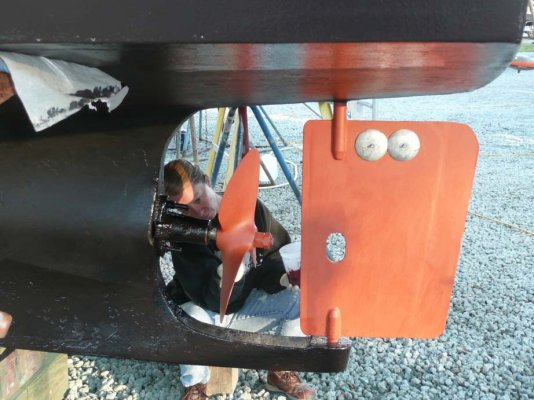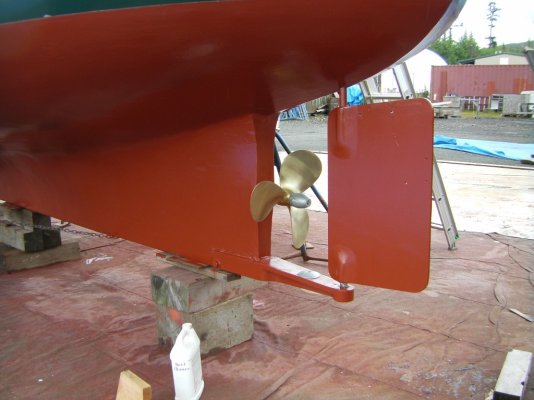Actually in addition to physical balance, the whole idea behind a pivoted rudder is that the portion of the rudder forward of the pivot point, the part that actually moves out in the opposite direction of the turn, is*to reduce the pressure or force*needed to turn the rudder.* The water hitting this smaller forward*portion of rudder provides a force that helps turn the rudder in the direction of the turn.* So less force is needed at the helm, or less force is required by the hydraulic system.AllanY wrote:
The leading edge balances the rudder and the other effect is to give better steerage when reversing
Now rudders that are hinged directly to the end of the keel don't have this feature.* The*whole surface of the rudder*has to be moved out against the force of*the water flowing past it.
But if the rudder is a balanced*pivoted rudder (or a spade rudder on a twin) there is, I suspect, a formula or two that governs the ratio of surface area ahead of the pivot point to the surface area aft of it.*
Too*much surface area forward and the steering can actually be overcome by the force*trying to pivot the rudder and you (or the hydraulic system) will have to "hold it back" from going too far over.* Too little surface area aft of the pivot point and you'll have to add more steering pressure to move the rudder over.* The correct ratio will yield a neutral steering effort with the rudder being easy to put over without having to add much*force to move it or any force to*hold it back.
Obviously the forces will change with the boat's speed but if you get that ratio*wrong, you or your steering system will be doing more work than necessary at cruise speeds.* Or the boat may start hunting as the rudder is moved around by unbalanced forces.
The steering on our GB with its two pivoted spade rudders is absolutely neutral.* It requires no change in effort to move them near their center of travel as it does at the ends of their travel when underway.* And if you put the rudders over into a turn, even a fairly sharp turn, and let go of the wheel, the wheel just sits there.* This is with cable-chain steering.* The mechanical steering ratio tends to resist backfed forces, so that's some of it.* But the point is that the design of the rudders was carefully calculated to minimize the force needed at the wheel.
I believe it is much more than an "eyeball" art to design the right rudder for any given boat.
-- Edited by Marin on Wednesday 25th of August 2010 06:20:29 PM



